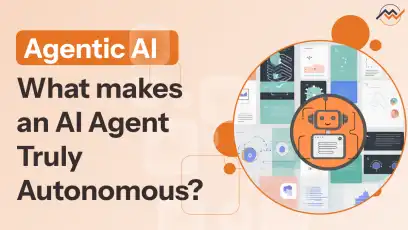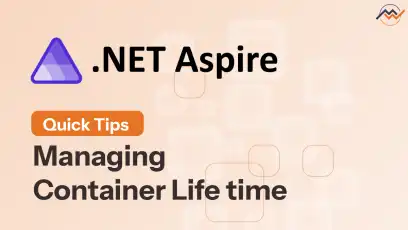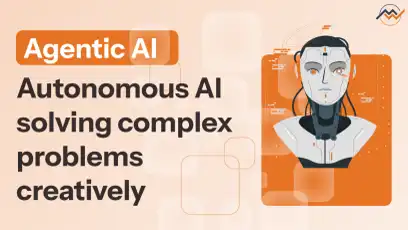Search fatigue is a common phenomenon in today’s digital age, where users become overwhelmed by irrelevant or redundant information while searching for products, services, or information online. Personalized search results can significantly reduce this fatigue, delivering relevant and user-focused content tailored to individual preferences and behaviors. In this article, we’ll explore scenarios where personalized results are impactful, examples of implementation, and the technical concerns developers must address.
Problem of Search Fatigue
Imagine you’re looking for a pair of running shoes online. After typing "running shoes" into a search bar, you're bombarded with thousands of options—different brands, models, and prices. Without a personalized system, you’ll spend hours filtering and comparing options, leading to frustration and abandonment of the search process. This frustration is known as search fatigue. It’s common in industries like e-commerce, education, and even entertainment platforms. Personalization helps users by prioritizing what matters most to them.
Scenarios Where Personalized Results Shine
E-Commerce: Suggesting Relevant Products
- A user frequently shops for eco-friendly products. When they search for "laundry detergent," the system prioritizes environmentally friendly brands based on past purchases or preferences.
- Imagine a user searches for "running shoes." Instead of showing all available options, the platform suggests shoes optimized for trail running because the user recently browsed outdoor gear. It also highlights brands they’ve purchased before and offers discounts on products they’ve added to their wishlist.
Outcome: Reduced decision-making time and increased likelihood of a purchase.
Streaming Platforms: Curating Entertainment
- A streaming service user watches a lot of crime thrillers. Instead of displaying a random assortment of trending shows, the system recommends recently added crime thrillers or related genres.
- If the user watches a foreign-language thriller, the system may suggest similar international movies or shows in the same language—expanding user interest without feeling overwhelming. It may also create curated playlists such as "Binge-worthy Crime Dramas" based on user trends.
Outcome: Higher engagement and retention as users find appealing content faster.
Healthcare: Targeted Health Resources
- A user searches for "knee pain remedies" on a health platform. Based on their profile (age, activity level, and previous searches), the system recommends exercises, medical articles, or products tailored to their demographic.
- If a 55-year-old user searches for "knee pain remedies," the platform might prioritize exercises or treatments for age-related joint issues. Meanwhile, a 25-year-old athlete searching for the same term might see recovery techniques and injury prevention tips for high-impact sports.
Outcome: Users receive actionable, relevant advice, reducing unnecessary searches.
Travel Platforms: Destination Recommendations
- A user looks up "beach destinations" on a travel booking site. The system takes into account their location, past bookings, and preferences to recommend the top-rated beaches near their region or trending deals for international getaways.
- If the user previously booked family-friendly resorts, the system highlights beach destinations with child-friendly amenities. Conversely, if their history includes solo travel, it suggests quiet or adventurous beach spots.
Outcome: Simplified decision-making, helping users plan trips efficiently.
How Personalization Works
Implementing personalized results involves strategic planning and execution to ensure both user satisfaction and system efficiency. Here are the key steps:
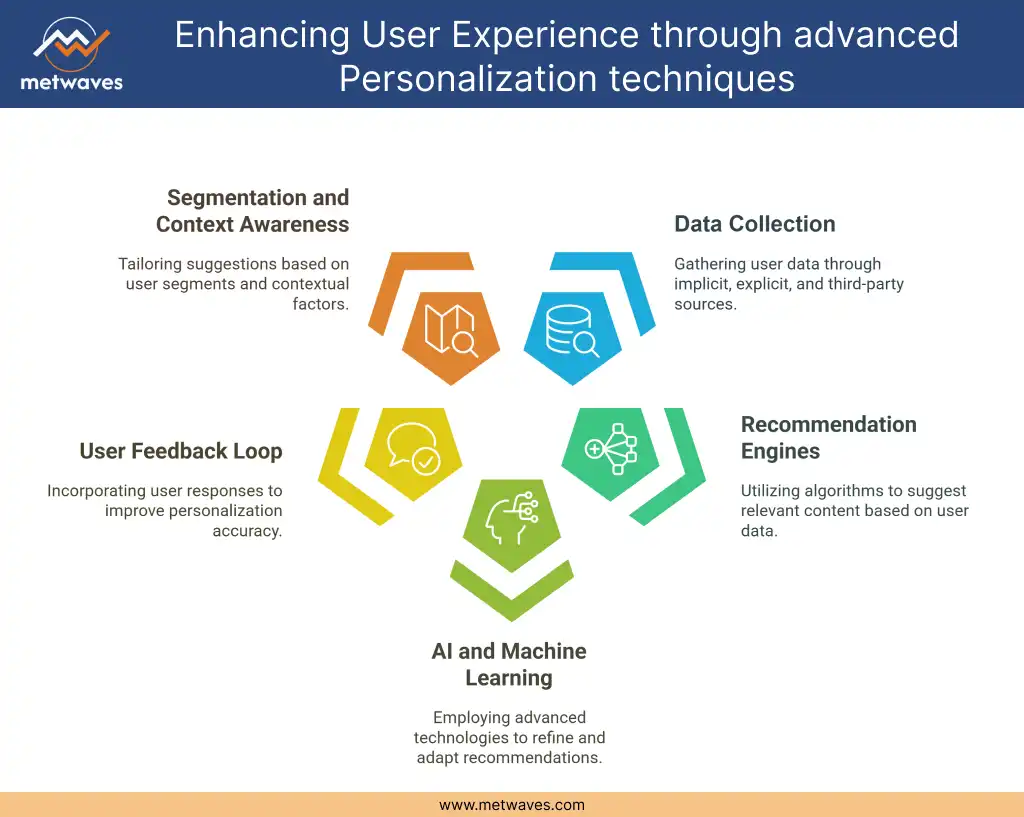
- Data Collection
Implicit Data: Behavioral data such as search history, click-through rates, time spent on pages, and interactions. For example, if a user frequently visits pages related to fitness equipment, this data informs future product recommendations.
Explicit Data: Information provided directly by the user, such as preferences, profile details (e.g., age, location), and saved searches. For example, a user selecting "vegetarian recipes" as a preference on a food blog will see relevant meal plans.
Third-Party Data: External insights collected through partnerships or APIs (adhering to privacy guidelines). For example, integrating weather data to recommend seasonal clothing. - Recommendation Engines
Collaborative Filtering: Identifies patterns among groups of users with similar preferences. If User A and User B both like product X, and User A also likes product Y, the system might recommend product Y to User B.
Content-Based Filtering: Focuses on the attributes of items a user has engaged with. For example, if a user watches a sci-fi movie, the system suggests other movies within the same genre.
Hybrid Models: Combines collaborative and content-based approaches to deliver more accurate and nuanced recommendations. For example, a hybrid model may recommend a product based on both similar users’ behavior and the product’s attributes. - AI and Machine Learning
Natural Language Processing (NLP): Understands and interprets search queries. For example, if a user types "affordable family vacation spots," NLP helps refine results by emphasizing affordability and family-friendly locations.
Deep Learning Models: Processes large datasets to identify intricate patterns. For example, a streaming service might use deep learning to predict what a user will watch next based on their viewing sequence.
Real-Time Data Processing: Adapts recommendations instantly. For example, an e-commerce platform adjusts product suggestions dynamically as the user navigates the site. - User Feedback Loop
Platforms often rely on user feedback to improve personalization. Thumbs-up/down, ratings, or explicit reviews help refine algorithms. For example, if a user gives low ratings to recommended items, the system adjusts future suggestions. - Segmentation and Context Awareness
Personalization becomes even more effective when combined with segmentation. For example, travel platforms may adjust recommendations based on current location (local beaches for short trips vs. exotic destinations for long vacations).
Context awareness, such as time of day or season, can further refine results. For example, an online store might recommend hot beverages during winter mornings.
Personalization relies on gathering, analyzing, and acting on user data. Let’s break it down further:
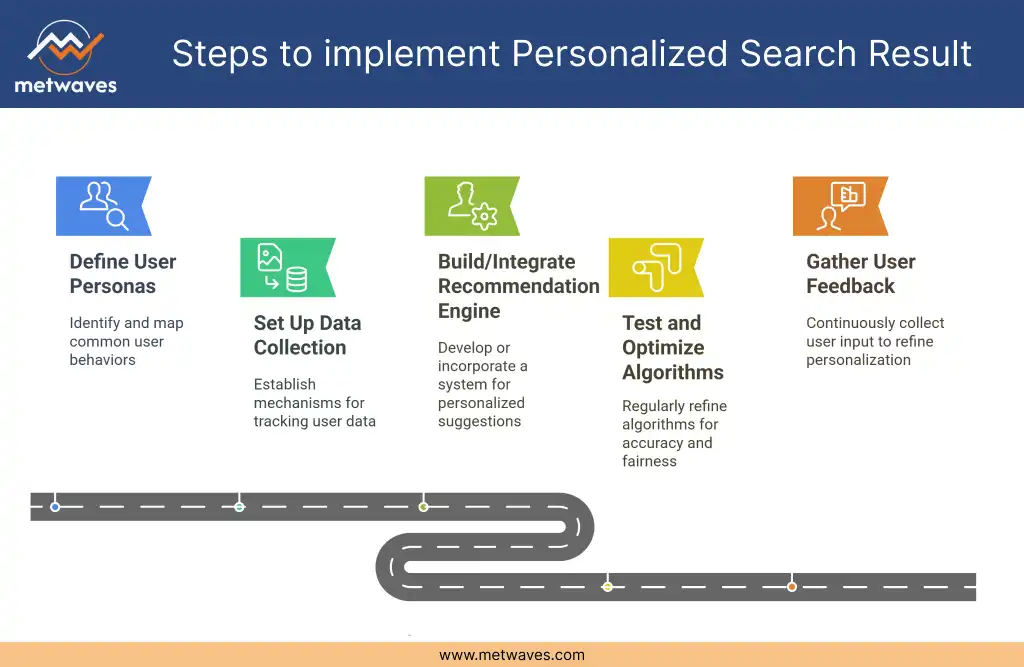
Examples of Personalized Systems
Amazon: Amazon’s recommendation system combines collaborative and content-based filtering to analyze browsing history and purchase patterns. For instance, browsing fitness equipment might prompt suggestions for yoga mats or fitness books, enhancing the shopping experience and driving cross-category sales.
Spotify: Spotify’s "Discover Weekly" playlists use listening history and preferences to recommend music. Its algorithms compare user behavior to others with similar tastes, suggesting tracks or artists in preferred genres, keeping users engaged.
Netflix: Netflix tailors its homepage with machine learning, analyzing watch history and habits. For example, a user watching romantic comedies might see similar titles or trending rom-coms, ensuring quicker discovery and boosting satisfaction
Conclusion
Uses Personalized search results are the antidote to search fatigue, offering users faster, more relevant outcomes while enhancing overall satisfaction. By addressing technical concerns and leveraging AI-driven technologies, businesses can create systems that deliver exceptional, tailored experiences while maintaining user trust.
How Metwaves Can Help : Metwaves specializes in designing and implementing personalized solutions tailored to your business needs. Our team leverages advanced AI, machine learning, and data analytics to build scalable, secure, and user-focused systems. Whether you need to enhance e-commerce recommendations, optimize learning platforms, or deliver better user experiences on your website, Metwaves provides end-to-end solutions to help you stand out in a competitive digital landscape.


